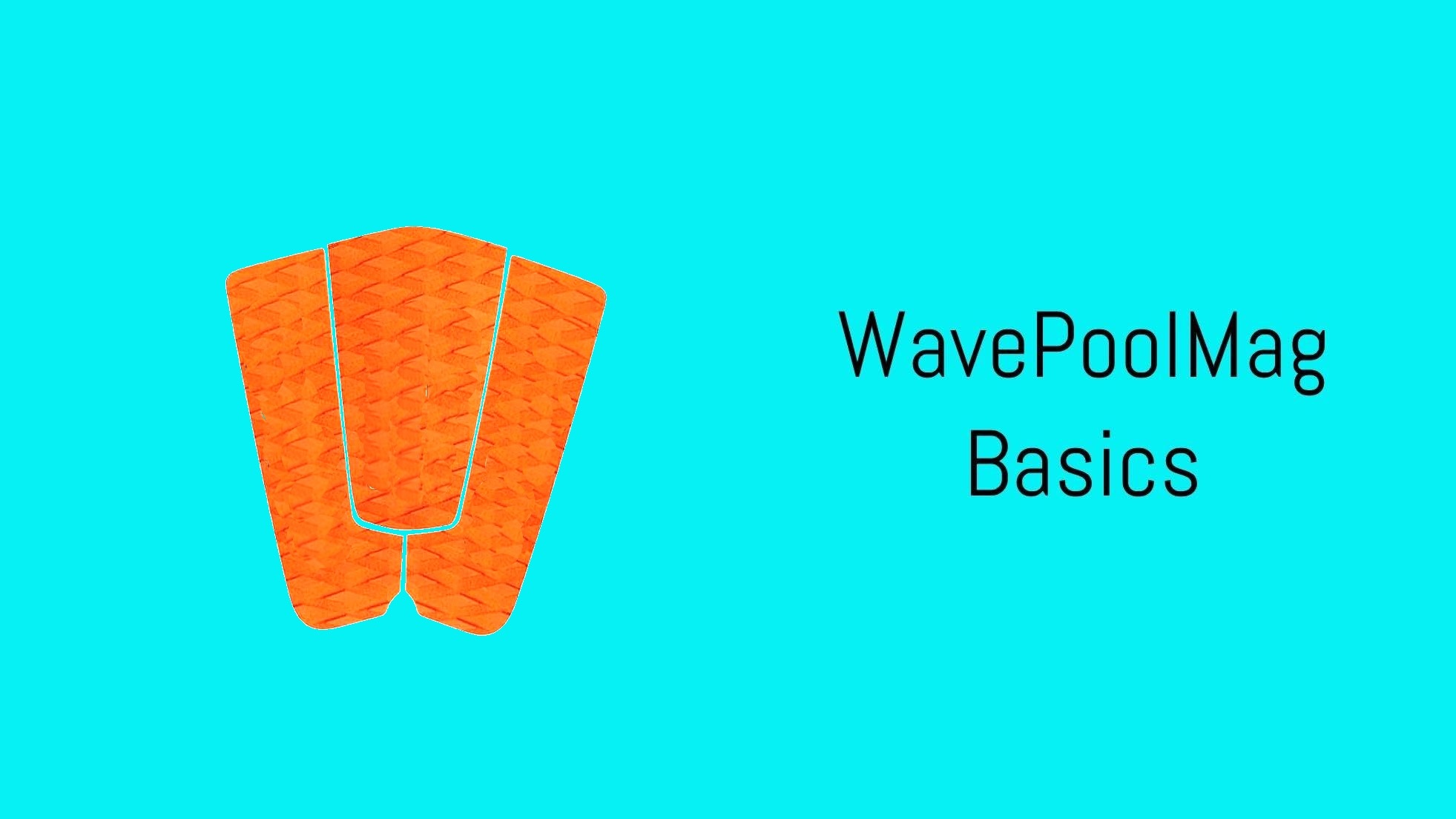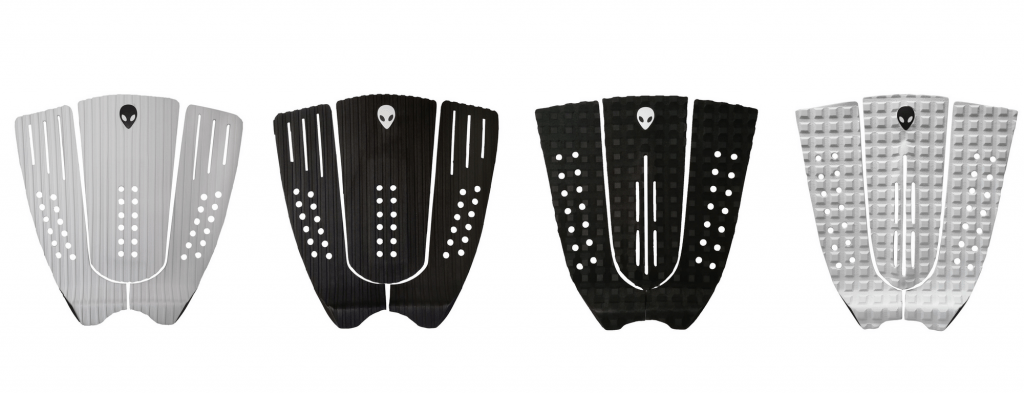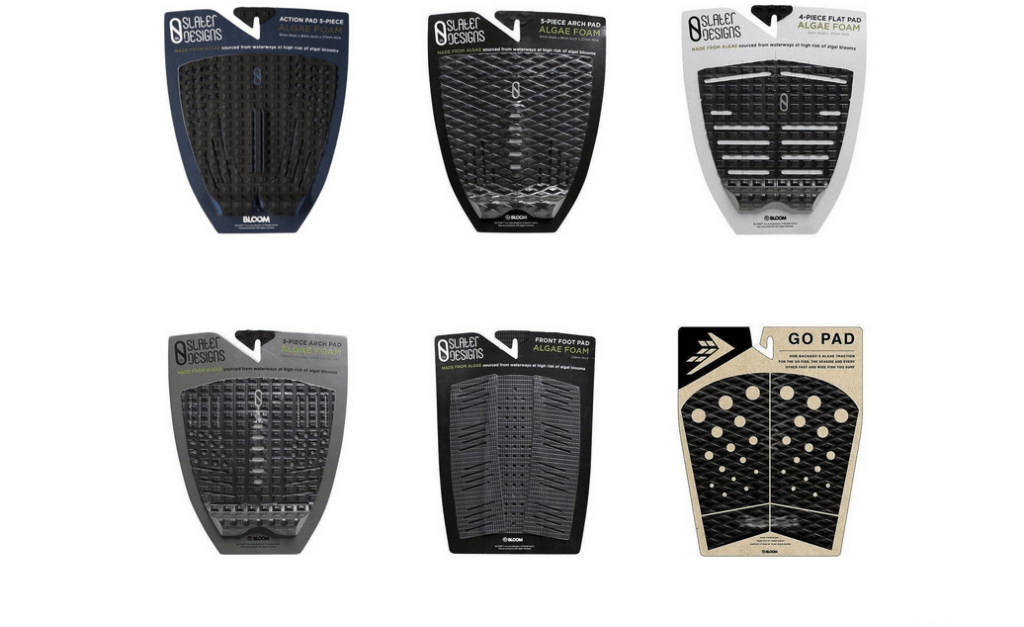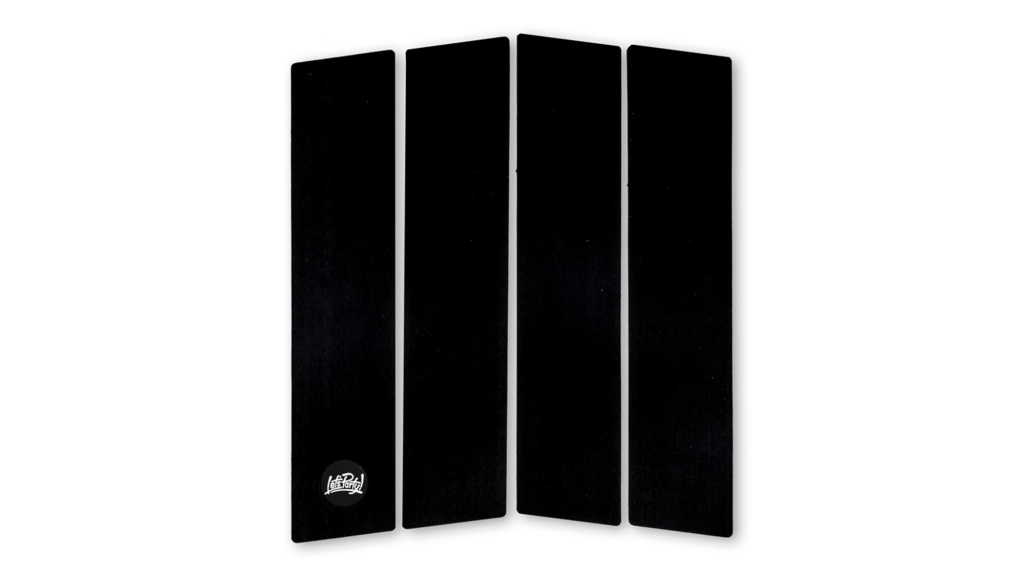What to know about traction pads: Evolution, design and (yes!) placement tips

Traction pads today are as synonymous to surfing as fins, a leash, and wax. From world champions to average Joes, from the ocean to the wave pool, everyone is using grippy foam pads on their tails to maintain control.
But it wasn’t always like that. Nearly a half-century ago traction pads didn’t exist. It wasn’t until the 1970s that a surfing legend popularized the new technology. And it worked like a charm. The new type of traction quickly went from novelty item to a must-have accessory for your shortboard.
Nearly a half-century later, traction pads are still king – the best solution for keeping your back foot attached to the board. Learning how to choose a pad and apply it is a valuable skill that all surfers need to master.
The traction revolution of the 1970s
Back in 1975 Californian surf legend Herbie Fletcher had a vision. When he saw that a surfer from Orange County, Jim Van Vleck, had developed a spray-on urethane foam to add grip to surfboards called Astrodeck, a lightbulb went off in his head. At the time, surf wax had been strongly established as the predominant grip option for surfing, but Fletcher had a feeling that wax was not the end all be all for surf traction. He decided to purchase the company from Van Vleck in 1976 and the world of surfing as they knew it would never be the same.
With the help of his soon-to-be pro surfer children Nathan and Christian as product testers, in the following years Fletcher continued to tweak and experiment with new technology. He tried different materials, like polyurethane elastomer foam, created the peel and stick glue that you see today, and took inspiration from his background in skateboarding to add a ‘kick’ to the tail.
“Being a young kid surfing in Hawaii, surfing in Huntington, all we had was paraffin wax, you know, candle wax, and it gets really slippery, especially in cold water,” said Fletcher. “So there was always a deal about traction. Everybody was looking for traction.”
It didn’t take long for the value of this new accessory to catch on. Fletcher pushed the product out to surf shops and soon enough professional surfers considered it a must-have on their boards.
Astrodeck, still family owned and operated by the Fletchers, continues to be one of the leading traction pad brands to date. Dozens of others have since joined the fray, creating their own traction pads and unique technology. Combined, they’ve pumped out millions of units to meet the demand of the continually growing number of surfers around the world.

Why use traction pads?
Do you ever find your backfoot slipping off the end of a pad-less board? It can result in an uncomfortable rendition of the splits. Even the best of surfers can relate.
Where wax can become too soft, or too hard, and be a hassle to maintain, traction pads prove to be an effective solution. Traction pads provide more grip at the board’s pivot point – the tail – and consistently add said grip without need of upkeep.
For shortboard (typically thruster) surfing, where your back foot is generally placed in the same location every time, the traction pads make sense and undeniably enhance performance.
Traction pads also have the added benefit of making it simple to find the correct back-foot placement when popping up.
However, traction pads are by no means a necessity. Some people prefer the feel of wax, and on boards that require more movement of the feet, like eggs and fishes, it’s really a matter of preference. And, of course, it’s very rare to see anyone using traction pads on a longboard because the entire deck is utilized by the surfer.

How to select your traction pad
There is no universal traction pad that will work for everyone. It’s important to find a pad that fits you and your board best.
“John John Florence chose a five-piece pad so he could add the top two pieces to his step up,” said Micah Nickens, Surf Marketing Manager at Dakine. “[And] John has a bigger foot so he went with a seven millimeter center arch.”
Here are a few factors to consider when purchasing your pad.
Arch
The arch is a length-wise raise in pad’s height in the tail to nose direction. It accommodates the arch of a foot. Some people have big arches in their feet, others have flat feet. The shape of your foot might determine what pad suits you best. Others, despite the shape of their foot, have a preference for the feel of a high arch, low arch, or no arch in the pad of the board.
Kick
The kick of a pad is how much it raises at the tail in a rail-to-rail direction. The kick is created to stop your foot from sliding backwards and apply more pressure to the tail of the board when turning. Some pads are created with high kick, while others have little-to-no kick. Find out what style best suits your surfing.
Pieces
Pads can be created as one cohesive sticker or as multiple pieces – a puzzle that you can put together as you wish. Both styles have their pros and cons.
A one piece pad is relatively simple to apply and, over time, is less prone to peeling off.
A multiple piece pad allows for more customization than a one-piece pad. You can space the pieces as you please to fit the dimensions of your board. However, multiple pieces lead to more corners and edges that can be exposed to the abuse of sand and water. These edges are more prone to peeling off, especially if not applied correctly (more on that next).
Style
Different traction pad suppliers use different grip designs, from crosses to diamonds to grids. Some have channels within the pads to reduce weight and allow for water to flow through. One design isn’t necessarily better than another, but you may find that you have a preference.
Some surfers prefer to completly forgo wax and use lower profile pads for front grip as well. This style was popular in the late ‘80s era of traction made popular by Glen Winton (along with webbed gloves) and 1986 world champ Barton Lynch. Today, aerial surfers like Chippa Wilson embrace the use of front foot pads. If you go with front grip pads, be aware that it can cause chaffing to your chest if you are surfing without a wetsuit. How to place a traction pad

Correctly placing a traction pad on a deck takes a bit more care and preparation than slapping a sticker on the nose of your board. If you follow these steps you can assure that your pad will last for the maximum amount of time – hopefully the entire duration of the board. When in doubt, you can always ask your local wave pool’s pro shop for help.
1 Clean the surfaceBefore you even think about placing the pad, make sure the surface is impeccably clean. Remove all dust, debris, wax, and even oils from your hands. Household cleaning products, like windex, or even rubbing alcohol, work well to make the deck spotless. Make sure you completely dry the deck with a paper towel after using cleaning agents.
2 Pick your placementThere are a few methods to make sure that you place your pad exactly where you want. First, make sure that the pad is about as far back on the tail as your board will allow. It should be a centimeter or two above the leash plug, but not so close to the leash plug that it inhibits you from putting in a leash string. A classic beginner mistake is placing the pad too far from the tail, which greatly reduces the board’s maneuverability.
Once you have selected the placement, you can either use the board’s stringer to align it perfectly, or you can even use a pencil to lightly trace where it will go.
Kelly Slater has an interesting technique where he leaves the pad in the plastic wrap and only removes the adhesive cover for the middle piece. He then uses the placed middle piece as the guide for the rest of the pieces.
When initially placing the pads, do not press down too hard. If you leave them lightly pressed, you will still be able to peel off and adjust if need be.
3 Apply pressureOnce you are happy with where your pads are placed, you can apply pressure to allow the glue to take its strong hold on the deck. Beware, once you do this it is nearly impossible to go back as the fresh glue engages.
Kelly Slater recommends applying pressure starting from one side to the other. He says this avoids air bubbles, which can form if you press down on the entire pad at once.
4 Be patientOnce your pads are placed, don’t be overzealous and take it straight into the water for a surf. Give the glue several hours to dry. Some even recommend letting it dry overnight.
5 RepairsTraction pads are not made to last forever. After many hours of exposure to salt water, sand, heat, and sun, one day the traction pad’s glue will inevitably lose its grip. If you notice parts of your pad are beginning to lift from the deck, it’s best to address the problem as soon as possible.
First, let the pad dry out with a fan to make sure all water is removed. Then find a glue that is water resistant and adheres to most any surface. We’ve found that neoprene, or contact cement works well, but there are many adhesive products at the hardware store that will securely reattach your pad to the deck.
Are there alternatives to traction pads?
Traction pads are still the overwhelming favorite grip technology among shortboard surfers, but there are innovative companies attempting to take a piece of the market share.
GryptaLite, for example, has created a plastic film that provides grip and can be placed across the entire deck. Van Der Waal has a product with hexagonal strips that can replace wax and foam traction altogether as well.
And there is always the traditional method: no pad, all wax. Some surfers still prefer the feel of wax under their feet and forgo the use of a traction pad.
A fifty-year reign
The foam traction pad has yet to be dethroned on its current half century run. It’s impressive that the technology that Herbie Fletcher introduced long before wave pools were even a thing has withstood the test of time. The grip, feel, and softness of a traction pad continues to provide the best performance experience for the vast majority of shortboard surfers.
However, just as when traction pads burst onto the scene, surely their run of popularity will not last forever. New technologies with lighter, stronger, more comfortable materials are somewhere on the horizon, just waiting to be made and disrupt the market.
But for now, a traction pad is still your best bet – and a good one at that. Use this guide to make sure you get the most out of your pad whether at the pool or the beach.
Related Coverage
